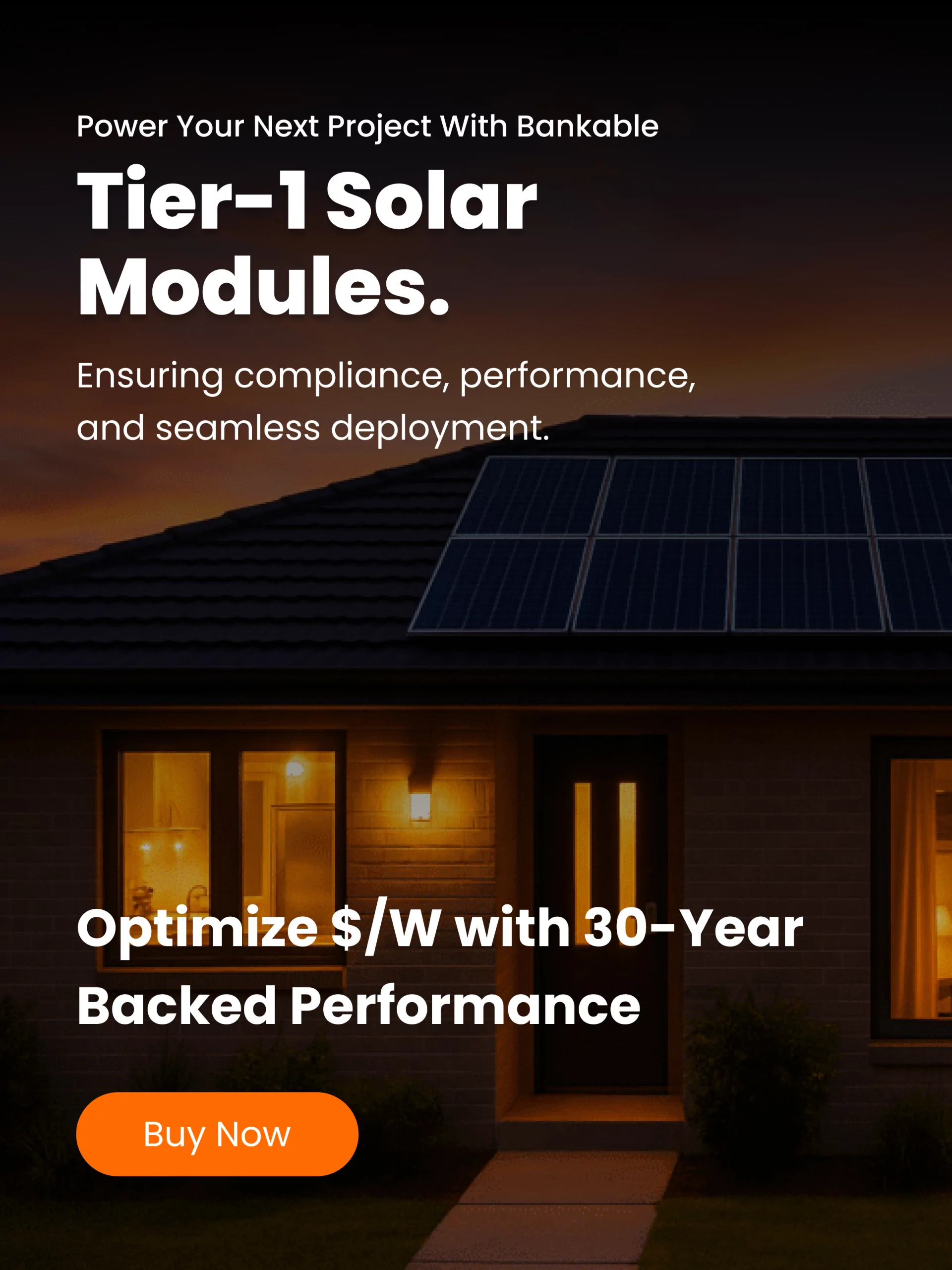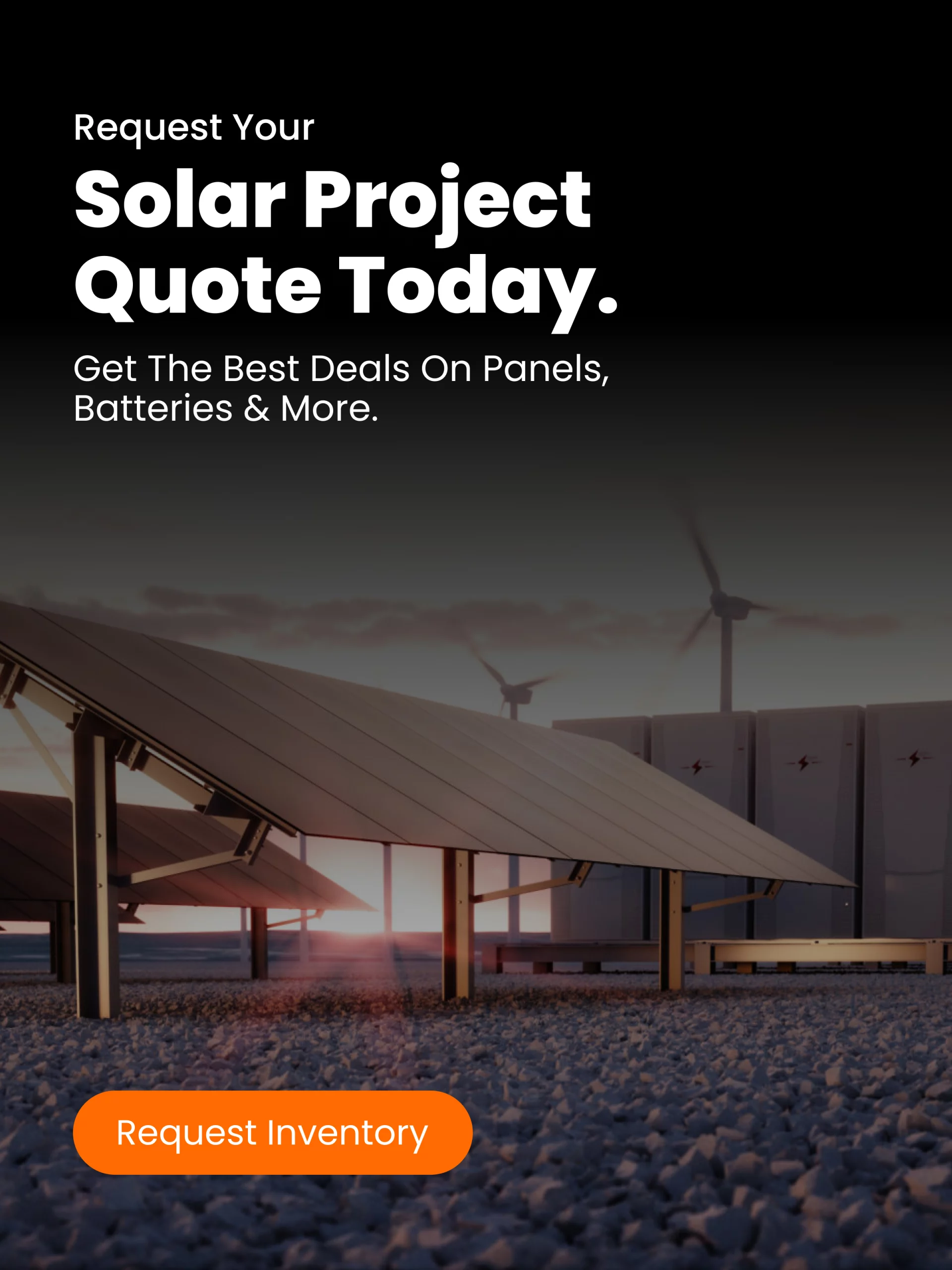When a business owner hears the term “commercial solar PV system,” it may sound technical. In plain language, it is simply a solar energy installation designed to serve a commercial building, such as an office block, warehouse, shopping center, school, hospital or hotel, rather than a private home. The “PV” stands for photovoltaic, meaning the solar panels turn sunlight directly into electricity.
However, even though the concept is straightforward, the design, scale, financing and operation of commercial solar systems can differ significantly from residential solar. This blog will explain how commercial solar PV systems work, what makes them different, the benefits they bring to businesses, what types and configurations exist, and the key factors any company should evaluate before making the leap.
How commercial solar PV systems work
At its core, a commercial solar PV system follows the same principle as any other solar setup: panels absorb sunlight, generate electricity, and feed power to a building or to the grid. But the scale, components and financial models are typically larger and more complex.
Here’s a breakdown of the process and major components:
- Solar modules (panels) – These are the rectangular structures containing arrays of photovoltaic cells (most typically crystalline silicon types such as monocrystalline or polycrystalline) that absorb sunlight and convert it into direct current (DC) electricity.
- Stringing panels into arrays – Panels are connected to one another to form an array. Multiple arrays may form to reach the desired system size. For commercial buildings, these arrays often cover rooftops, ground-mounted fields, carport structures or even building façades.
- Inverter(s) – Because the panels produce DC electricity and most commercial electrical systems use alternating current (AC), an inverter converts DC to AC. In larger systems you may find central inverters or multiple string inverters.
- Distribution panel and electrical tie-in – The AC power feeds into the building’s electrical distribution panel and may offset the building’s demand from the utility grid. If the system is grid-tied, surplus power can be exported, depending on interconnection rules and net-metering or net-billing policies.
- Optional energy storage or additional systems – Many commercial systems incorporate batteries, thermal storage, or microgrid controls so that power can be stored for use during evenings, peak demand times or outages. This adds resilience and greater control over energy use.

Because commercial energy usage is usually higher during the day, when solar power is most available, these systems are naturally well-suited for businesses.
Because commercial systems often serve high electricity-usage buildings and may deal with demand charges (fees based on peak power use) rather than simply energy use, system design takes into account not just kilowatt-hours generated but schedule, load profile, orientation, shading, roof strength and utility rates.
What sets commercial solar apart from residential systems
While residential solar installations serve homes and typically range from a few kilowatts (kW), commercial solar systems may range from tens of kW to multiple megawatts (MW). Key differences include:
- Scale and footprint: Commercial solar uses larger footprints, flat rooftops, warehouse roofs, large parking lot carports or ground-mount arrays. This allows system sizes that far exceed typical residential installations.
- Load profile: Businesses use power during daytime hours when solar production peaks, which aligns very well with solar generation. Homes may use more power in evenings when solar is not producing.
- Financial structure: Commercial solar projects often use more sophisticated financing, sometimes incorporating tax equity, power purchase agreements (PPAs), leasing, or utility-bill savings models.
- Grid interaction: Commercial installations often deal with demand charges, peak usage periods, and may design systems to reduce peak loads or avoid expensive demand fees—this requires more complex design than simply offsetting energy costs.
- Maintenance and lifespan considerations: Because the investment is larger, the expectation is a long lifespan of 20-30+ years, low degradation, minimal maintenance and strong performance tracking.
Types and configurations of commercial solar PV systems
Commercial solar PV systems can be configured in various ways depending on space, building type, budget and goals. Here are the common types:
- Rooftop systems: Many commercial buildings have large flat or slightly pitched roofs, ideal for solar arrays. These are often the most cost-effective since no extra land is required.
- Ground-mounted systems: If rooftop space is limited or the building wants a larger system, ground-mounted arrays on nearby land can be used. They allow optimized orientation and tilt.
- Carport systems: Solar panels mounted on parking lot structures serve dual purpose providing shade for vehicles and generating electricity. Good for buildings with large parking footprints.
- Building-integrated photovoltaics (BIPV): Solar materials integrated into building elements such as façades, windows or roofing. Less common in large commercial builds but growing in specialized applications.
Selecting the right type depends on space, building usage, mounting structure, shading, orientation, budget and long-term strategy.
Key benefits of commercial solar PV for businesses
When businesses adopt solar, they can realize a number of strategic benefits. Below are major advantages and deeper explanations:
1. Lower operating and energy costs
Commercial solar allows a business to generate its own electricity rather than buying from a utility. Because solar power has no fuel cost, once installed it offers a predictable cost structure. Many commercial projects report payback periods of 3-7 years depending on size, incentives and energy rates.
Over time, the savings accumulate and energy costs are sheltered from utility rate increases.
2. Enhanced resilience and energy control
With battery storage or on-site generation, businesses can reduce dependency on the local grid. During outages or peak demand surcharges, they can continue operations, reduce downtime and avoid costly interruption. This builds operational resilience.
3. Contribution to sustainability and ESG goals
Many companies now use solar as part of their sustainability or ESG (Environmental, Social, Governance) initiatives. Installing solar reduces carbon emissions immediately and demonstrates commitment to clean energy. This can help companies meet regulatory requirements, investor expectations and brand image goals.
4. Improved property value and long-term asset
Solar systems transform part of the building’s roof or land into a value-generating asset. For property owners and tenants, having on-site generation can improve occupancy, lease terms and long-term value because the building will have lower utility costs.
5. Low maintenance and long lifespan
Solar panels have no moving parts, require infrequent maintenance, and many manufacturers offer 25-year or longer performance warranties. This lowers the risk for business owners and ensures decades of performance.
Cost and financial metrics to understand
When evaluating a commercial solar system, certain financial metrics and terms are critical:
- Return on investment (ROI): How many years until the savings from the system offset the upfront cost.
- Capital expenditures (CAPEX): The initial investment required for the system (panels, inverters, installation, permits, etc.).
- Levelized cost of energy (LCOE): The average cost per kilowatt-hour produced, considering all costs over the system’s lifetime.
- Incentives and tax credits: Such as the U.S. Investment Tax Credit (ITC) or depreciation rules. Incentives reduce net cost and accelerate payback.
- Demand charges and utility rate structure: For commercial users, peak demand fees often represent large cost components; solar systems can be designed to reduce those charges.
- System lifespan and degradation: Solar panels produce slightly less electricity each year (typically <1% loss per year). Ensuring a long warranty and good warranty coverage is vital.

Actual results vary based on electricity rates, sunlight hours, and incentives available.
A business owner considering solar should model expected energy consumption, current bills, future utility rate escalation, system size, incentive qualification and financing options.
What to evaluate when planning a commercial solar project
Before going ahead with a solar PV system, businesses should conduct a thorough evaluation and planning process. Consider these factors:
- Site and structural assessment: Determine how much rooftop or land is available, roof orientation, shading, structural load bearing, and whether carports or ground mounts are feasible.
- Energy usage profile: Review your building’s current electricity consumption pattern—how much energy you use and when (daytime versus night), and whether demand charges apply.
- Utility interconnection and incentives: Investigate local policies, interconnection rules, net-metering or export credit, and available tax credits or rebates.
- Financing and procurement strategy: Decide whether to buy the system outright, lease it, or engage a PPA. Consider tax equity financing if applicable.
- Maintenance and operational plans: Clarify the warranty, monitoring plans, performance guarantees and maintenance responsibilities.
- Future expansion and flexibility: Ensure the design allows for future growth, storage integration or EV charging infrastructure if needed.




